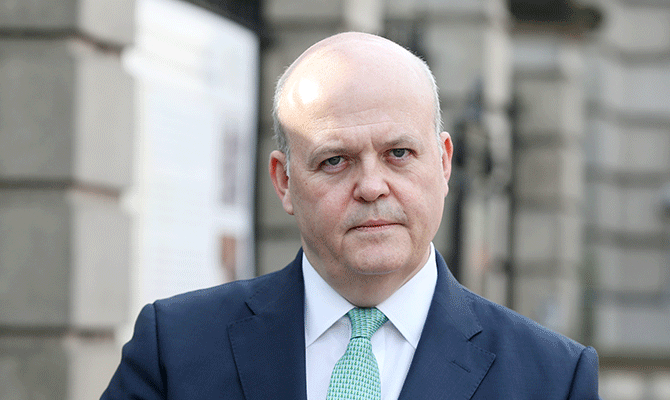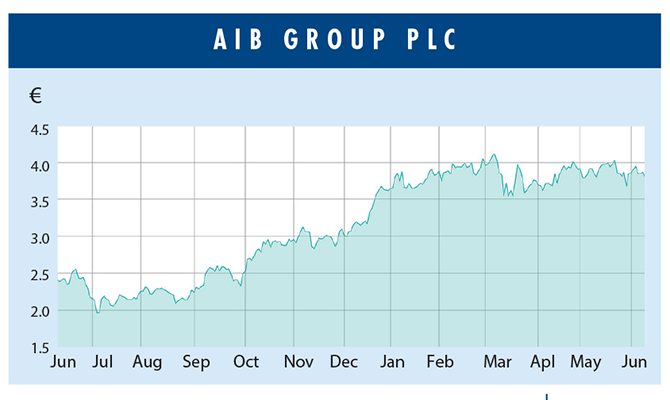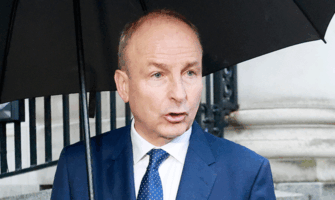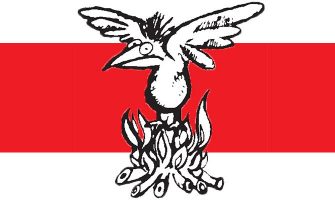
Colin Hunt
AIB SUPREMO Colin Hunt has had a challenging time since his appointment as CEO in March 2019, trying to keep pace with Bank of Ireland (BoI) during Francesca McDonagh’s reign. Now, however, the shoe is on the other foot and, as a result of rising interest rates and the acquisition of Ulster Bank’s tracker mortgage book, AIB looks set to scoop outrageous profits over the next few years.
McDonagh put the peddle to the floor during her stint in Dublin, with BoI’s variable rate mortgage customers being charged a whopping 4.6% at a time when the European Central Bank (ECB) base rate was nil and average mortgage rates in Europe were at 1.5%. At the same time, AIB was charging variable mortgage rate customers 2.9%.
McDonagh also oversaw the closing down of 100 BoI branches throughout Ireland, a move that generated little media backlash, in contrast to the furore provoked by AIB’s attempt to cease cash transactions in 72 of its branches nationwide.
PROFITS
BoI thus began to outperform AIB on the bottom line, although the short-term strategy adopted by McDonagh is causing a few headaches for her successor, Myles O’Grady. Despite the chunky increase in the ECB base rate from nil to 3.25% over the last year, O’Grady has not been in a position to pass on the hikes to his long-suffering customers who are stuck on 4.6%.
In the past, AIB was by some way the more profitable of the two banks, both relatively and in absolute terms. In 2017, for example, the year BoI appointed McDonagh, AIB turned in a pre-provision operating profit of €1.48bn, whereas BoI turned in a comparative surplus of €1.05bn.
In 2018, McDonagh’s first full year, AIB again comfortably outperformed BoI, with an operating profit of €1.28bn compared with the latter’s €0.85bn. The following year, when McDonagh had settled in at BoI, the gap closed significantly, with AIB turning in an operating profit of €1.09bn compared with BoI’s €0.93bn.
In 2020, the first pandemic year, both pillar banks returned losses as a result of taking huge bad debt impairment charges. Over in AIB, Hunt provided for a huge €1.46bn charge to end up with a very hefty €0.73bn loss, whereas McDonagh provided for a much lower €1.13bn to end up with a loss of €0.37bn, half that of AIB.
At the pre-provision level, however, AIB was beaten to the post for the first time in years, delivering an operating profit of €0.73bn, whereas BoI returned a somewhat higher €0.76bn.
In the second pandemic year, McDonagh’s aggressive strategy really manifested itself, with the squeeze on BoI’s mortgage holders and the extensive branch closure programme helping to ensure that the bank returned a pre-provision operating profit of €1.17bn.
In AIB, Hunt could report only a €688m pre-provision surplus, which was a whopping 41% less than the BoI figure.
The gap between the two pillar banks closed somewhat last year, with AIB turning in a pre-provision profit of €1.08bn, 20% behind BoI’s €1.35bn.
INTEREST RATES
The reason the profit gap is narrowing is twofold. Firstly, McDonagh’s 100-branch closure left some very small towns without any bank but many of the larger towns were left with an AIB branch.
Secondly, AIB has been able to push up its variable loan rate to 3.5%, whereas BoI’s (higher) variable rate has been stuck at 4.6%, so O’Grady has seen no benefit from the ECB’s multiple base rate hikes.
Hunt has nearly doubled AIB’s fixed two-year rate to 4.5% but, more interestingly, his purchase of the whole of Ulster Bank’s €7bn tracker loan book has proved a real bonanza. Instead of this chunky tracker book yielding around 1%, which was the case last year, the rate charged here has automatically shot up along with the ECB base rate, with AIB now earning 4.25% on this book – four times what it was throwing off a year ago.
With AIB’s interest costs on its deposit book heading for over 1%, this leaves Hunt sitting on an incremental profit from the Ulster Bank tracker loan book purchase alone of around €210m pa.
It is only this year, therefore, that the real impact of the ECB base rate hikes is being felt. AIB has shoved up all its short-term fixed rates, for example doubling its two-year fixed rate to the significantly fatter 4.5%, since the end of last year.
RISING MARGINS
Hunt has also been able to push up AIB’s variable rates. For example, he has added another 0.35% on the back of the ECB rates hitting 3.25%, which has pushed the rate here up to 3.5%. This is, of course, still well under BoI’s 4.6% variable rate but with deposit rates still down at well under 1% on average, AIB is now generating supercharged profits.
The trading update issued on May 4 is eye-opening. Based on the results so far this year and the current prevailing interest rates, Hunt is looking at pushing up his net interest margin from 1.74% last year to 2.70% – a remarkable increase of 55%. This is leading him to project net interest income of over €3.3bn in 2023, a whopping €1.15bn increase on last year’s €2.15bn net interest income.
Assuming costs don’t change too much, this should translate into an increase in operating profit from €1.08bn in 2022 to €2.23bn this year.
Such an outturn would put AIB well clear of BoI, where O’Grady simply cannot undo the customer flow to its competitor as a result of the branch closure programme.
It is difficult to know how investors are going to react to this pending profit bonanza. At the current share price of €3.85, AIB is capitalised at only just over €10bn, which makes these shares look like a real bargain.
On the basis of projected operating profits in the current year of €2.23bn and significant tax credits from the major losses carried forward, this could well see AIB delivering net earnings of €2bn to leave the bank on an paltry prospective five times price/earnings multiple.
As long as the Irish banking market remains essentially uncompetitive as a result of the exit of both Ulster Bank and KBC, the two pillar banks will have the bulk of the Irish cake to themselves for the foreseeable future. It looks like they could generate eye-watering profits for the next few years.
Reference the Market Abuse Regulations 2005, nothing published by Moneybags in this section is to be taken as a recommendation, either implicit or explicit, to buy or sell any of the shares mentioned.




















